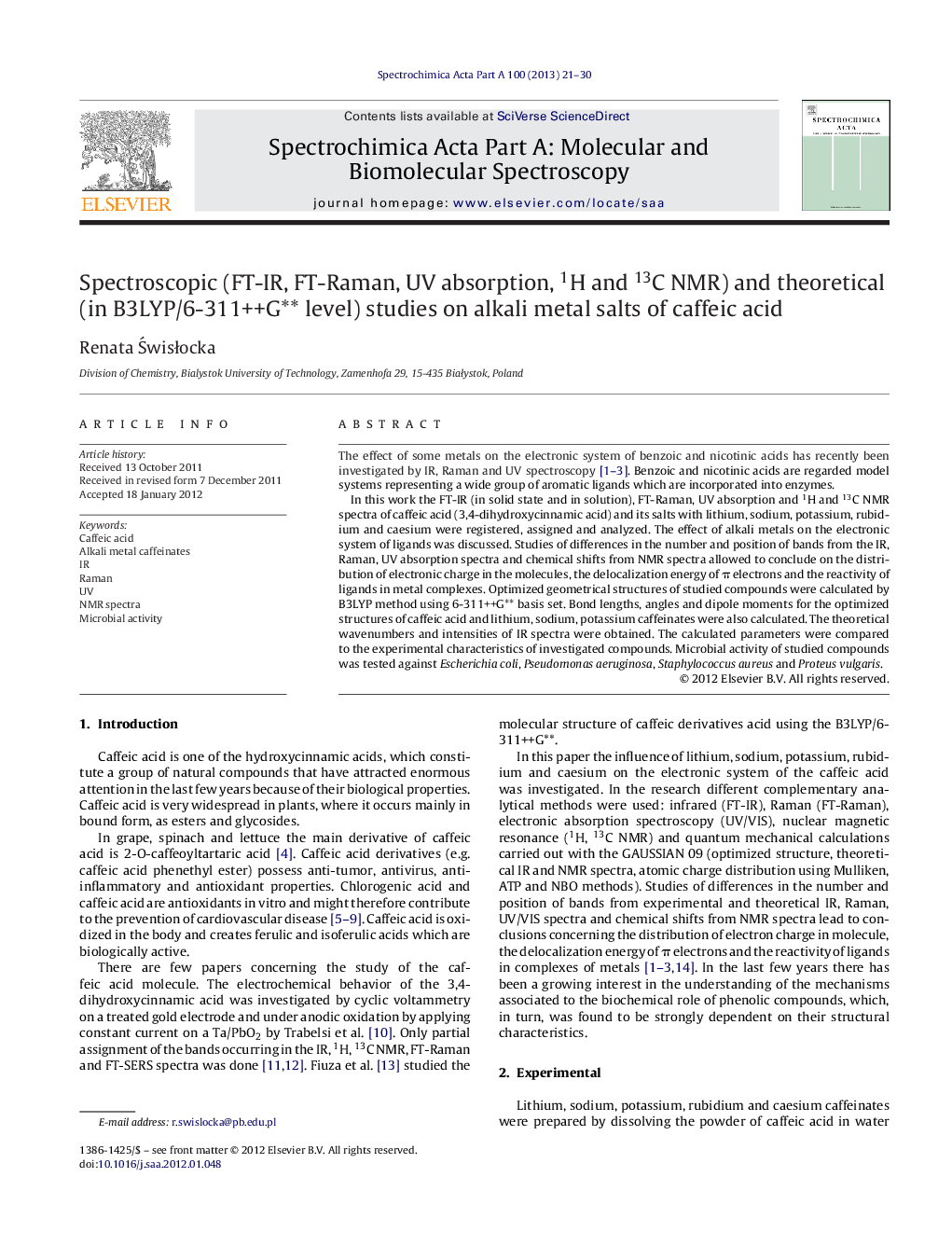| کد مقاله | کد نشریه | سال انتشار | مقاله انگلیسی | نسخه تمام متن |
|---|---|---|---|---|
| 1230931 | 1495268 | 2013 | 10 صفحه PDF | دانلود رایگان |

The effect of some metals on the electronic system of benzoic and nicotinic acids has recently been investigated by IR, Raman and UV spectroscopy [1], [2] and [3]. Benzoic and nicotinic acids are regarded model systems representing a wide group of aromatic ligands which are incorporated into enzymes.In this work the FT-IR (in solid state and in solution), FT-Raman, UV absorption and 1H and 13C NMR spectra of caffeic acid (3,4-dihydroxycinnamic acid) and its salts with lithium, sodium, potassium, rubidium and caesium were registered, assigned and analyzed. The effect of alkali metals on the electronic system of ligands was discussed. Studies of differences in the number and position of bands from the IR, Raman, UV absorption spectra and chemical shifts from NMR spectra allowed to conclude on the distribution of electronic charge in the molecules, the delocalization energy of π electrons and the reactivity of ligands in metal complexes. Optimized geometrical structures of studied compounds were calculated by B3LYP method using 6-311++G** basis set. Bond lengths, angles and dipole moments for the optimized structures of caffeic acid and lithium, sodium, potassium caffeinates were also calculated. The theoretical wavenumbers and intensities of IR spectra were obtained. The calculated parameters were compared to the experimental characteristics of investigated compounds. Microbial activity of studied compounds was tested against Escherichia coli, Pseudomonas aeruginosa, Staphylococcus aureus and Proteus vulgaris.
The theoretical (a), experimental IRKBr (b), ATR in solid (c), ATR in solution (d) and Raman (e) spectra of caffeic acid.Figure optionsDownload as PowerPoint slideHighlights
► The influence of alkali metals on the structure of caffeic acid was investigated.
► IR, Raman, UV and NMR methods were used.
► The structures, atomic charges, and infrared spectra were calculated by B3LYP/6-311++G** method.
Journal: Spectrochimica Acta Part A: Molecular and Biomolecular Spectroscopy - Volume 100, 1 January 2013, Pages 21–30